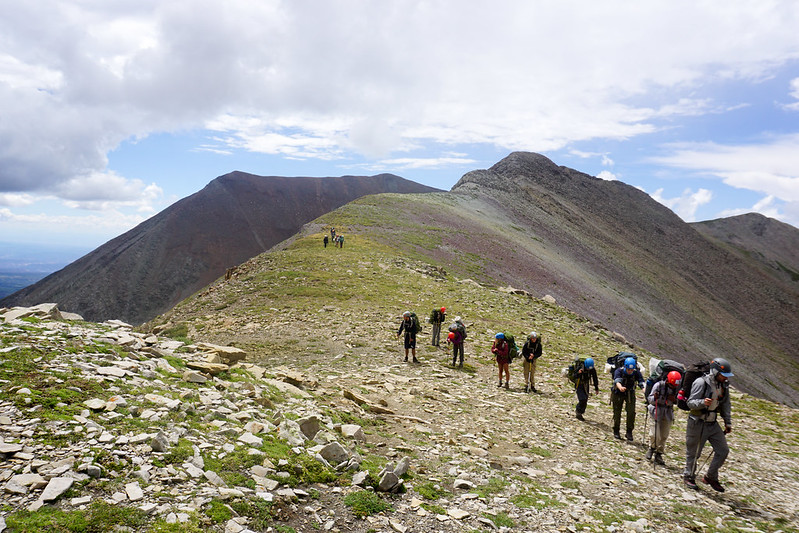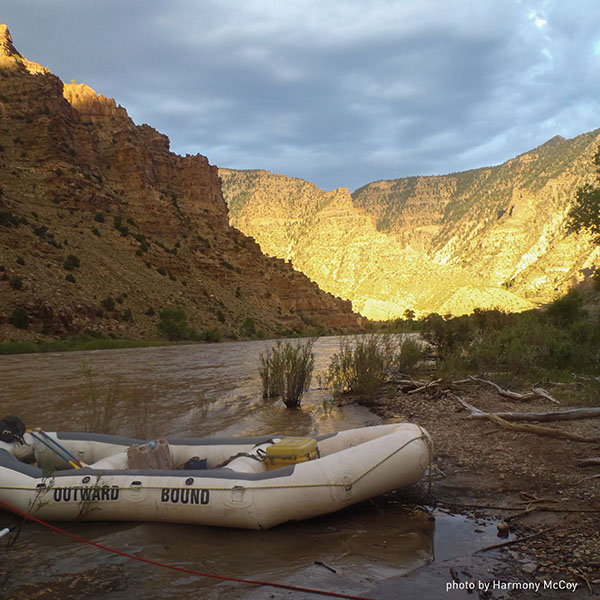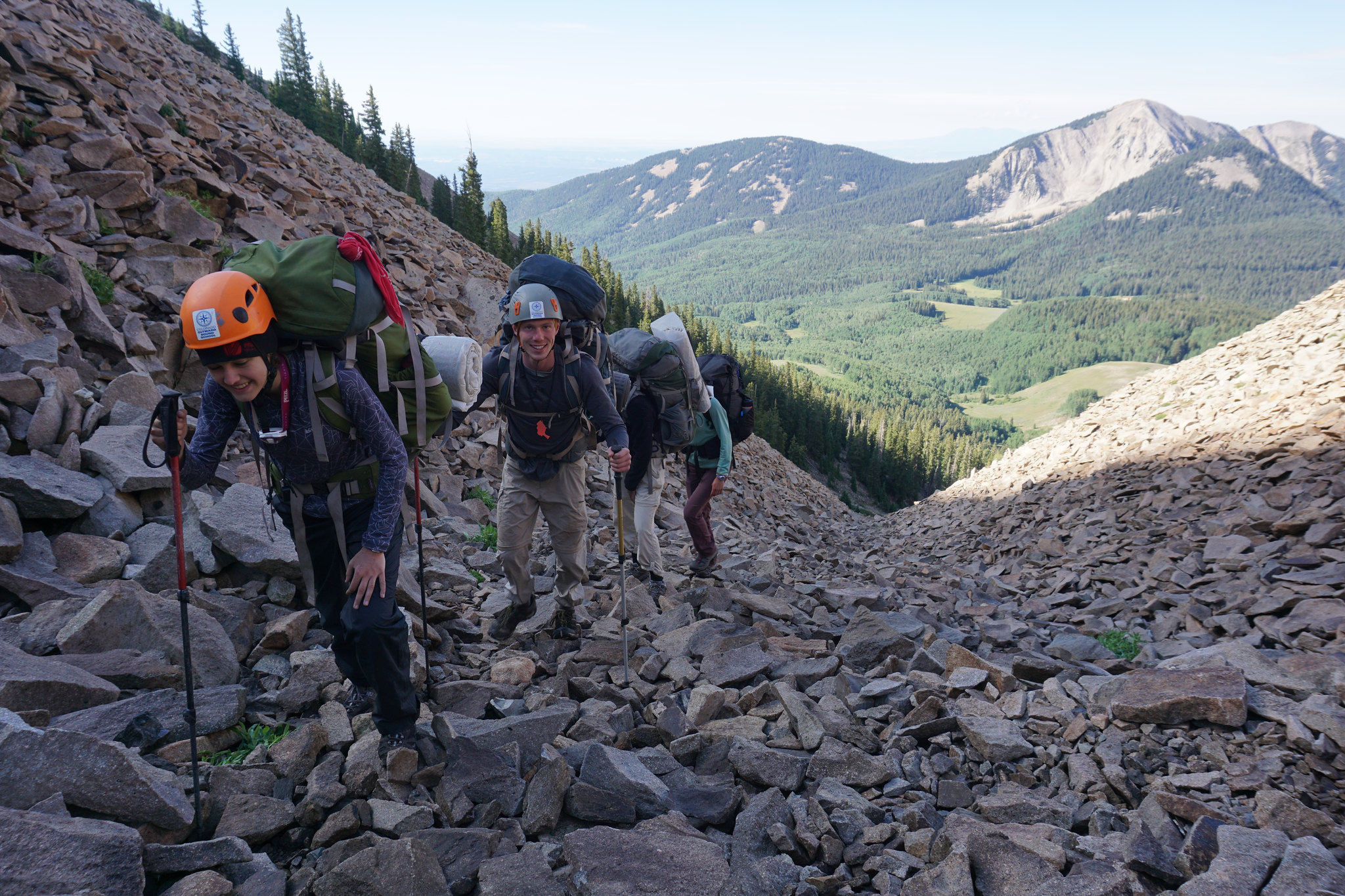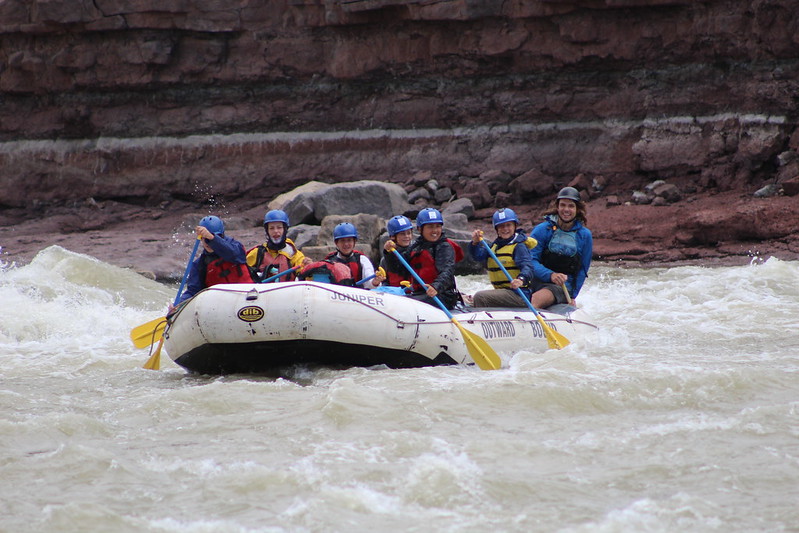La Sal Mountains, Utah
The La Sal Mountains rise dramatically out of the desert, towering 9,000’ above the surrounding canyonlands and Moab. The La Sals are known for their groves of aspen, rich amount of wildlife, high summits, and incredible views overlooking Canyonlands and Arches National Park and the Four Corners area. Hidden lakes dot the landscape. Peaks in the La Sals range from ten thousand to just under thirteen thousand feet and include the highest mountains in Southern Utah. The La Sal Mountains are within the ancestral lands of the Ute.

Photo: Dave Erbe |📍Ute lands
Desolation and Gray Canyons, Utah
Surrounded by the Tavaputs Plateau and bordered by the Uinta and Ouray Reservation on the east, the journey on the Green River begins in Desolation Canyon near Sand Wash. Throughout the canyon, there are spectacular rock formations, archaeological sites and abandoned ranches including McPherson Ranch, once frequented by Butch Cassidy's “Wild Bunch.” The tiered rock walls of Desolation give way to the earthy bluffs of Gray Canyon, creating a striking contrast that characterizes the next 25 miles of the journey.
On longer rafting courses you may continue your journey down the Green River through Labyrinth Canyon, where the river dives deep into the pink sandstone of the Navajo Formation which characterizes southeastern Utah and the Canyonlands area with narrow winding side canyons, orange Wingate cliffs, pinnacles and ledges. These regions are within the ancestral lands of the Ute and Diné Bikéyah nations.

Photo: Harmony McCoy |Ute and Diné Bikéyah lands
What is a land acknowledgment?
At the Colorado Outward Bound School, we include land acknowledgments in our work as a formal way to recognize and respect the traditional territories and Indigenous Peoples as stewards of the land. It is important to understand and acknowledge the comprehensive past, present, and future of the places we travel and to seek to understand our role therein. To recognize the land is an expression of gratitude and appreciation we give to the Indigenous Peoples who have been living and working on the land from time immemorial. Read more about land acknowledgments at Outward Bound here.
Alpine Backpacking
Alpine Backpacking will develop a foundational outdoor skillset for students allowing comfortable living during course. Traveling mostly above treeline, students will carry everything they need - food, shelter, clothing and gear – allowing them to go deep into the wilderness where few people go. Backpacking provides a sense of freedom, allowing students to eat when hungry, set up camp when tired, and exercise complete control over what is accomplished each day. The simplicity of backpacking gives students the opportunity to focus both internally on their own thoughts, as well as externally to connect deeply with others as they talk, sing, play games and spend time together without distraction. With the Rocky Mountains as a backdrop, students are introduced to backpacking with lessons in basic travel and camping techniques. As this section progresses, students learn Leave No Trace techniques, map and compass navigation, camp craft, and obtain an understanding of the area’s human and natural history.

Photo: Dave Erbe |📍Núu-agha-tʉvʉ-pʉ̱ (Ute) lands
Rafting
On the river, each day is spent learning to navigate various obstacles and how to anticipate the forces of the current from upstream. You and your companions will work to become a team, coordinating your spacing and paddle strokes. You will have an opportunity to be the captain of your crew and put to use what you’ve learned as you maneuver your raft through Class 2-4 rapids. Interspersed between the rapids are flat-water sections where there is a current, but no whitewater. At times, you will take advantage of this calm water to hone your skills and enjoy the view. Time in a raft is ideal for getting to know each other and forming boat pride, laughing your way downriver as you relax into river life. Afternoons can bring strong up-canyon winds, which create a challenge as you dig in to reach the camping destination. Rafting connects you to the river: the oasis of flora and fauna (including humans!) that rely on the river to survive in the desert. The soaring canyons complement the roar of whitewater, as well as the silences that can only be found in such remote beauty.

Photo: Curtis Huey |📍Núu-agha-tʉvʉ-pʉ̱ (Ute), Diné, and Pueblos lands
Guided Reflection and Transference
At Outward Bound we believe there is no learning without reflection. Throughout course, you will be prompted to reflect on what you’re experiencing on course, and what it means in the greater context of your life. Sometimes this is a journaling exercise, sometimes a group sharing experience, and sometimes a moment of solitude to sit and think. You spend focused time toward course progression end exploring how your new knowledge, skills and attributes can apply to your life after course.
Solo
Solo is a time when you’ll get the opportunity to spend time alone during course. With sufficient food and equipment, your Solo will be a chance to reflect on your course experience, journal, and connect with nature. Depending on your course length and environmental factors, Solo can range from 30 minutes to an overnight experience. You will not travel during this time and your Instructors may check on you occasionally. Your solo site will be close enough to your Instructors in case of emergency, but far enough removed to enjoy solitude. Many students are initially nervous about solo, but later recall it as one of the highlights of their course.
Service Project
Some projects focus on land restoration and are coordinated with partners and land managers like the US Forest Service, Bureau of Land Management and National Park Service. Other projects are grounded in social services, and may include visiting a nursing home or hospital. Past projects include working on a goat farm, building trails, cleaning trash and debris from natural spaces, working with a local community garden, and removing invasive species. Seeing the impact of their actions firsthand, students develop a value of service, and transfer this desire to serve their communities back home.
The following is an example of what your itinerary may look like. Your actual course plan will vary according to weather, your group’s skills and abilities, and Instructor preferences.
Day 2-8: Rafting Desolation/Grey Canyons
Day 9: Potential Service Project, Re-supply, & Transfer
Day 10-14: Backpacking, Solo
Day 15: Group Challenge, Course End, and Transportation Home
Our expeditions help students grow into the best version of themselves. We use adventure in the outdoors to help students discover their strengths and build authentic connections with their peers. Compassion for oneself and others is foundational to the Outward Bound experience. As students develop outdoor skills, they also gain confidence and leadership tools that will last a lifetime. Course outcomes include:
- Belonging – students form deep connections founded upon respect, inclusion, and compassion
- Reflection – students learn self-awareness and practice empathy towards others
- Physical Engagement – students develop awareness and confidence in their bodies
- Courage – students develop the confidence to speak up for themselves and persevere through challenges
Watch to Learn More
Tuition
You can pay your tuition online through your Applicant Portal or make the payment over the phone by calling 720-381-6589.
If your payment is not received by the due date listed in your Enrollment Email and on your Applicant Portal, you will risk losing your spot on course and your $500 deposit. Please review our Admissions and Cancellation Policies.
Travel Insurance
Airfare, travel costs, and non-refundable tuition payments are expensive. Insurance to protect your trip and course is strongly encouraged. We recommend insuring these costs from the third-party provider InsureMyTrip. This provider has coverage options that include travel costs and non-refundable tuition costs. For more information and to receive a free quote, click here.
Click here for COBS COVID-19 Program Practices